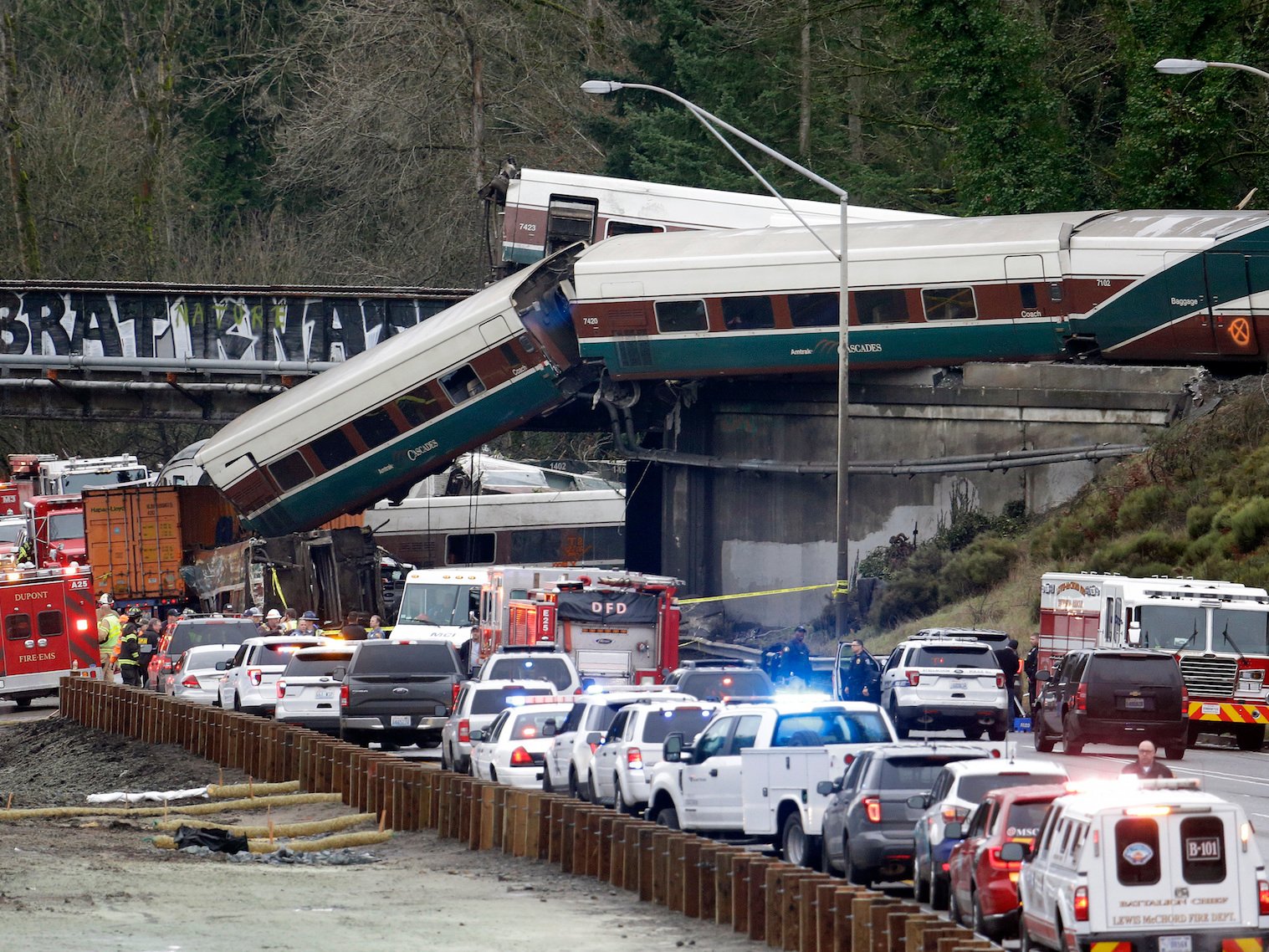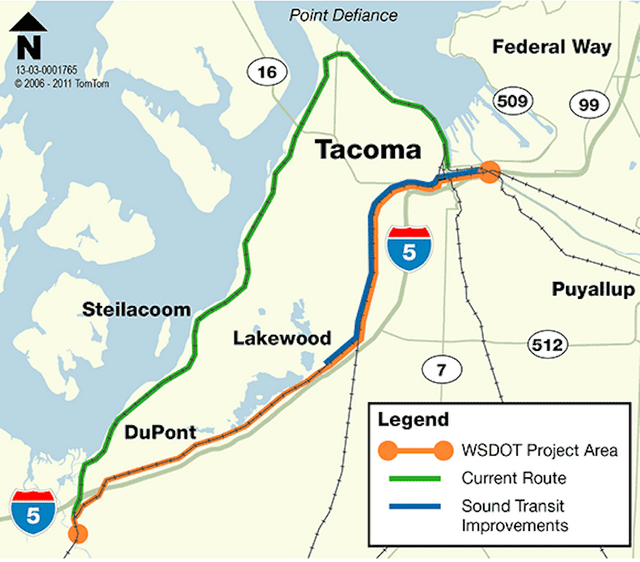Train Derailment in Seattle - who is at fault?

You see this image and think to yourself -
How could that happen?
Who is responsible?
Let's break it down -
Here is the new and improved route for reference (new path is in Orange):

- This was a brand new train route in Seattle / Tacoma area that allows for faster access to / from the Seattle metro area
- The new line and project cost $180M to build
Ok, sounds great. Then the details get more confusing -
- As quoted in a Business Insider article: "Amtrak Cascades passenger trains going through Tacoma would usually take a route along the shores of Puget Sound... While picturesque, the route features single-track tunnels and a risk of landslides, and the tight curves and heavy freight train traffic requires the Amtrak Cascades to slow down."
- The train was going 50 mph FASTER than it should be.
- Positive train control is a technology specifically created for situations where a train conductor might feel "out of control," and can initiate this to trigger the train to slow to the proper speeds. This tech was not enabled...
OK, so here are my questions:
- Why are we putting commuters at risk of landslides and "tight curves" for a quick tourism flyby of Puget Sound on a train?
- 50 mph too fast? How does that even happen? Articles states that multiple trial runs were conducted before they took this train out for it's first run, but obviously these conductors had no idea what they were doing and were ill prepared for the tight turns.
- What do you do now? The states of Washington and Oregon invested government funds to create this new track. Does it just go away or, similar to most other train incidents, we just sweep it under the rug.
My opinion -
Amtrak is ultimately at fault here, even if they are on the outside of some aspects looking in. As an organization, they need some major overhauling of how they interact and do business with the government. Because the two are often overlapping in ownership, it ultimately leads to major failure points across the board as each owner assumes the other is going the extra mile. Ultimately, neither side does their due diligence and things that are most important (e.g. safety) fall through the cracks. We've been operating trains in the US since 1795 based on Wikipedia. At this point, we should have it pretty well figured out.
Articles referenced:
http://www.businessinsider.com/amtrak-cascades-derail-point-defiance-bypass-2017-12?r=UK&IR=T
http://www.businessinsider.com/amtrak-train-washington-was-travelling-50-mph-above-speed-limit-when-it-crashed-2017-12
Did they ever determine if the train struck something before derailing? Also, I've seen the number 81 MPH tossed around when their max allowed speed is 79 MPH. Did the section of track recommend much less than that? Your comment is the first time I've seen that disparity in allowed speed vs. how fast the train was going.
Section of track was 30 mph, which is what caused the derailment around a curve.